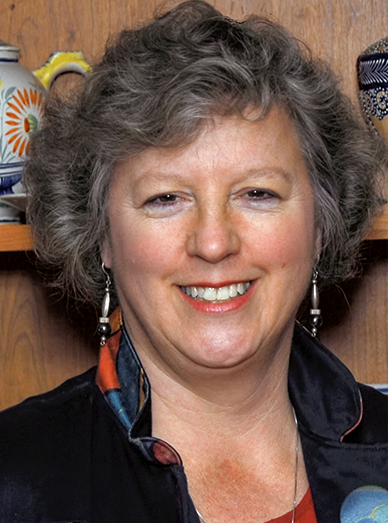A Pragmatic Activism
At Kenyon, student activists tackle national and international issues — as well as concerns closer to campus…
Read The StoryA Q&A with Maggie Calkins ‘81.

As a Kenyon student, Maggie Calkins ’81 never imagined that a class on the psychology of aesthetics, taught by Professor Ron Heyduk, would launch her career. Yet it set her on a path she didn't expect: environmental psychology. After graduating from Kenyon with a psychology degree, she took a job with an ophthalmological practice, where she found herself using her classroom experiences to question patients about the office's design and aesthetics. Her aim was to give the building’s architects feedback, but her brother, an architect, pointed out that they wouldn’t listen because she wasn’t an architect herself. So Calkins enrolled in the School of Architecture and Urban Planning at the University of Wisconsin-Milwaukee (UW-M), where she earned two advanced degrees. It was there that her desire to design and advocate for the elderly population was born.
The Bulletin asked Calkins, executive director of the Mayer-Rothschild Foundation — a Kirkland, Ohio-based philanthropy that works to improve the quality of life for elders in long-term care communities — about architecture, caring for our elders and why it’s important to talk about aging.
Q: What drew you to the field of elder care?
A: During a class at UW-M, we were asked if nursing homes should have a locked unit for people living with dementia. I was surprised to discover that the question had not been researched before. Later, while working in a care community, I helped brainstorm visual cues that would help people living with dementia find their way back to their bedrooms. But the lead researcher couched the questions in a manner different from my own. That’s when I realized I wanted to get my Ph.D. in architecture and direct my own research.
Q: How did your involvement with the Mayer-Rothschild Foundation begin?
A: I met Robert Mayer ’71 many years ago. In its early days, his foundation funded art programs for older adults in the Chicago area. But Rob wanted the foundation to have a deeper impact. When he heard me speak about improving the quality of life for people living with dementia through the built environment, we realized we were working toward the same goal. I began partnering with his foundation on various projects. Rob was an amazing person, who had a gift for seeing through challenges and overcoming barriers. I am proud to continue his work through the foundation.
Q: Your book, “Design for Dementia,” was published in 1988. What impact did your writing have on the elder care field?
A: At the time the book came out, it did two things. One, it said this is a group of people that we really need to pay attention to. And two, it said there are things we can do, both environmentally and interpersonally, to make life better or worse, easier or harder, for this population. If we create a better setting and train staff to communicate effectively, it makes all the difference in the world.
Q: Why is it hard to talk about aging in this country? And why must we talk about it?
A: There is pervasive ageism in the U.S., where we tend to value youth and beauty over respecting those who could share their wisdom with us. We value independence and self-sufficiency, too, which often does not go hand-in-hand with age. However, we are now seeing many more individuals who have been diagnosed with dementia coming forward to talk about their experiences and offering others support. There are increasing efforts to break down the stigma and create dementia-friendly communities. We have a long way to go, but we are definitely making progress.
At Kenyon, student activists tackle national and international issues — as well as concerns closer to campus…
Read The StoryBehind the music with Nick Petricca '09 of the popular rock band Walk the Moon, which got its start at Kenyon.
Read The StoryFrom pilgrimage souvenirs to rubber ducks, peek inside the personal collections of Kenyon alumni and faculty.
Read The Story